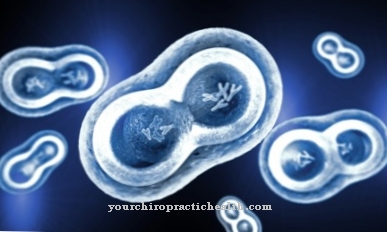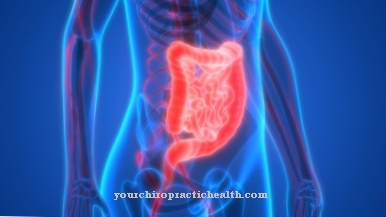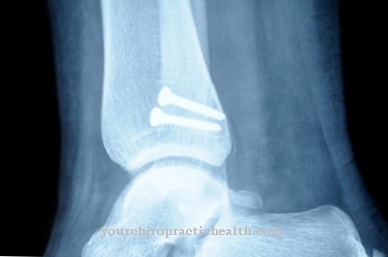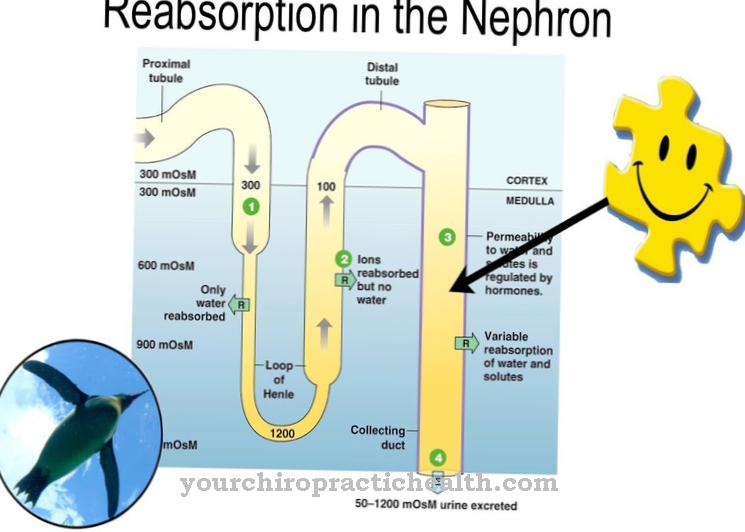The Deoxygenation is the dissociation of oxygen molecules from hemoglobin molecules in human blood. The oxygen supply to the body is based on a cycle of oxygenation and deoxygenation. This cycle is disturbed by phenomena such as smoke poisoning.
What is deoxygenation?

In chemical deoxygenation, the oxygen atoms are released from an atomic bond. Medicine refers the term to the breakdown of the oxygen bonds on hemoglobin. Hemoglobin is the red blood pigment that contains divalent iron atoms. In human respiration, hemoglobin serves as a transport medium thanks to this iron bond with an affinity for oxygen.
All organs and tissues in the body need oxygen. The blood transports the oxygen atoms to the thinnest branches of the bloodstream and thus supplies all tissues.
Oxygen has only limited solubility. Therefore, it is not only present in the blood plasma in free, but also in hemoglobin-bound form. This bond is also called oxygenation and is the opposite of deoxygenation.
The binding affinity of hemoglobin for oxygen changes in the different milieus of the body. When the affinity drops, deoxygenation takes place. The oxygen atoms are released to the individual tissues and organs of the body. Binding hemoglobin is also called deoxyhemoglobin. Similarly, oxygen-bound hemoglobin is called oxyhemoglobin.
Function & task
Oxygenation and deoxygenation work together in the human organism to supply the tissues with vital oxygen. Physically dissolved oxygen plays a role, for example, in the exchange between the blood plasma and the alveoli of the lungs. The oxygen exchange takes place between the plasma and the interstitium by diffusion. Physically dissolved oxygen also plays a role in this process.
In order to maintain the oxygen supply to all cells, however, due to the limited solubility, binding to hemoglobin is also a vital process. When the hemoglobin is oxygenated, its conformation changes. With this change in position, the central iron atom is spatially rearranged in the red blood pigment and the hemoglobin assumes a dynamic functional state.
Without oxygen binding, hemoglobin is actually deoxyhemoglobin and thus has a tense T-shape. With oxygenation, the shape of the hemoglobin changes to a relaxed R-shape. We are then talking about oxyhemoglobin. The affinity of hemoglobin for oxygen changes with the respective shape and spatial arrangement of the molecules. In its relaxed form, the red blood pigment has a greater affinity for oxygen than in its tense form.
The pH value also has an influence on the affinity. The higher the pH value in the respective body milieu, the higher the oxygen binding affinity of the hemoglobin. In addition, the temperatures influence the bonding properties. For example, the binding affinity for oxygen increases as the temperature drops.
In addition, the oxygen binding affinity is dependent on the carbon dioxide content. This dependence on the carbon dioxide concentration is referred to together with the pH dependence as the Bohr effect. The binding affinity of hemoglobin for oxygen falls with increasing carbon dioxide levels and a low pH value. With a low carbon dioxide level and a high pH value, the affinity increases. For this reason, the hemoglobin oxygenates in the alveolar capillaries of the lungs during breathing, because there is a falling carbon dioxide content and the blood pH rises.
In the blood system of the rest of the body, however, there are relatively high CO2 concentrations at low pH values. The binding affinity of the red blood pigment decreases. The oxygen dissociates from the hemoglobin molecules and deoxygenation takes place.
Without deoxygenation, the blood would therefore not be an effective transport medium for oxygen. If the oxygen molecules remained permanently bound to the iron in the hemoglobin, neither the body tissues nor the organs would benefit from the transport.
Illnesses & ailments
In the case of carbon monoxide poisoning, the oxygen-binding function of hemoglobin is impaired. If, for example, a patient has inhaled too much smoke gas in a fire scenario, carbon monoxide is deposited on the iron molecules of the hemoglobin instead of oxygen. As a result, there is less oxyhemoglobin in the plasma. There is hardly any oxygenation in the body, because the oxygen affinity of the red blood pigment falls with the CO concentration. The deoxygenation of hemoglobin is favored with the falling affinity. Hypoxia occurs. The body is then no longer adequately supplied with oxygen.
In the case of severe poisoning, there is talk of anoxia. One such phenomenon is the complete lack of oxygen in the tissues of the body. While anoxia is almost always related to smoke inhalation, the cause of hypoxia can also be anemia or embolism. For example, patients with sickle cell anemia suffer from chronic anemia. Your abnormal hemoglobin tends to clump together, clogging blood vessels and no longer oxygenating properly. Therefore, sickle cell anemia can also cause hypoxia. The same applies to so-called alpha thalassemia, in which the synthesis of the alpha chains in the protein component of hemoglobin is disturbed.
In the context of hypoxia there is always a disturbed cell metabolism in the body. The body cells are always damaged by the insufficient supply of oxygen. The severity of the consequences of the inadequate supply depends, for example, on how quickly it can be remedied. The administration of oxygen is an important step in the treatment of most deficiencies. Blood transfusions are usually essential in the case of blood formation diseases or hemoglobin disorders.

.jpg)























.jpg)

.jpg)
